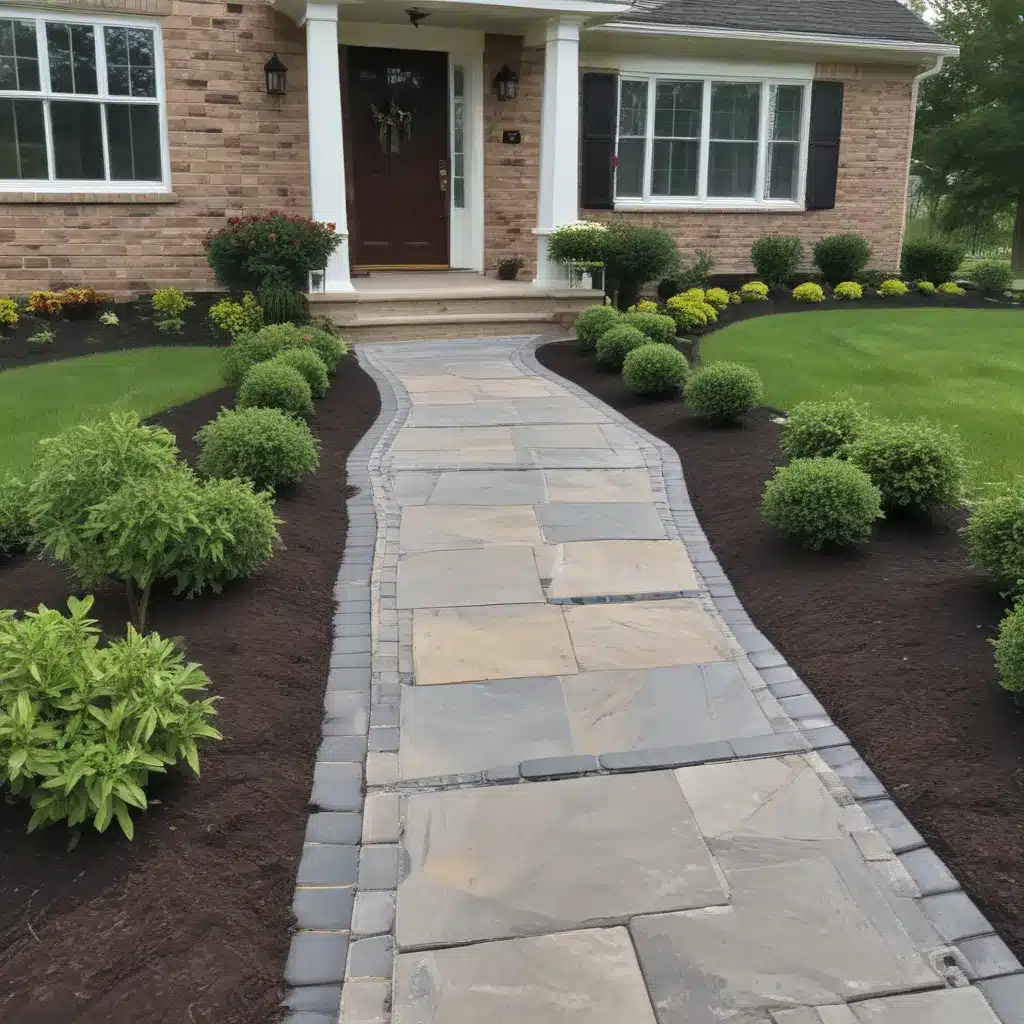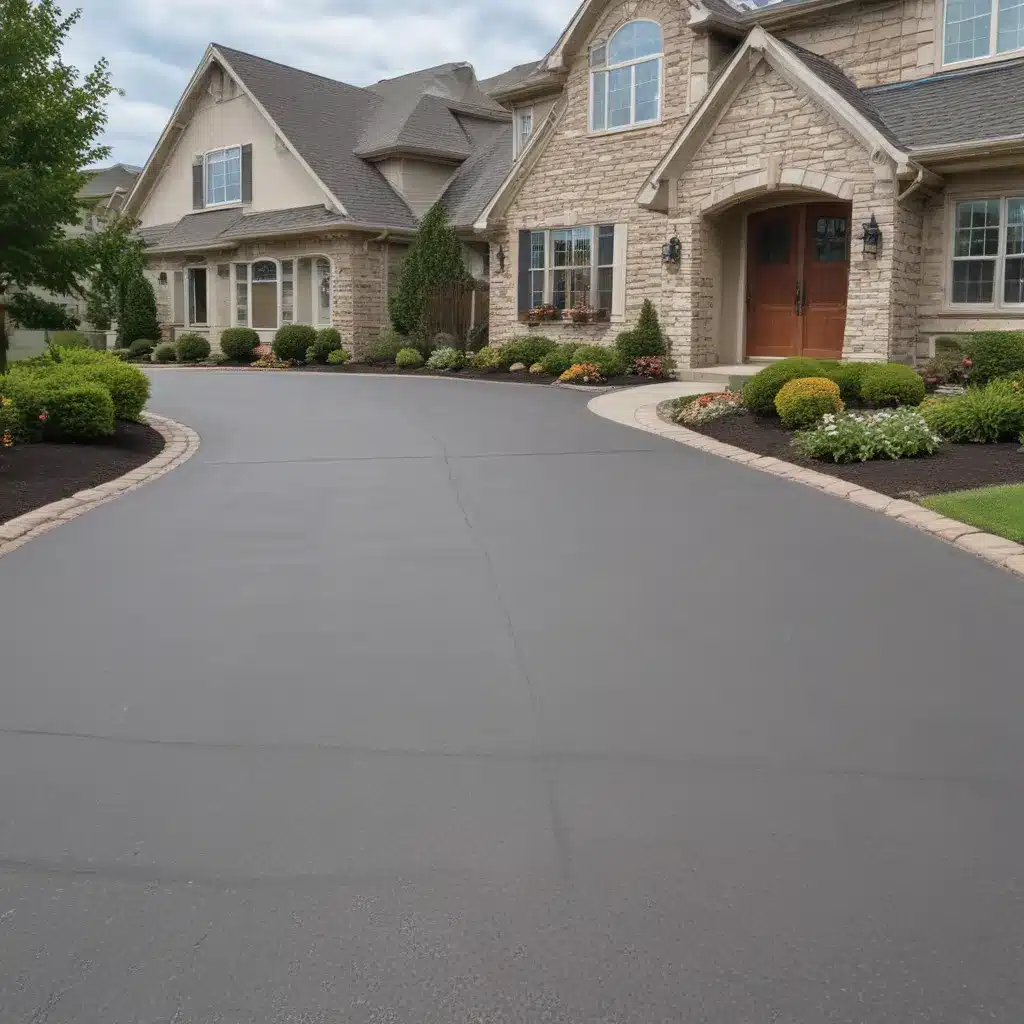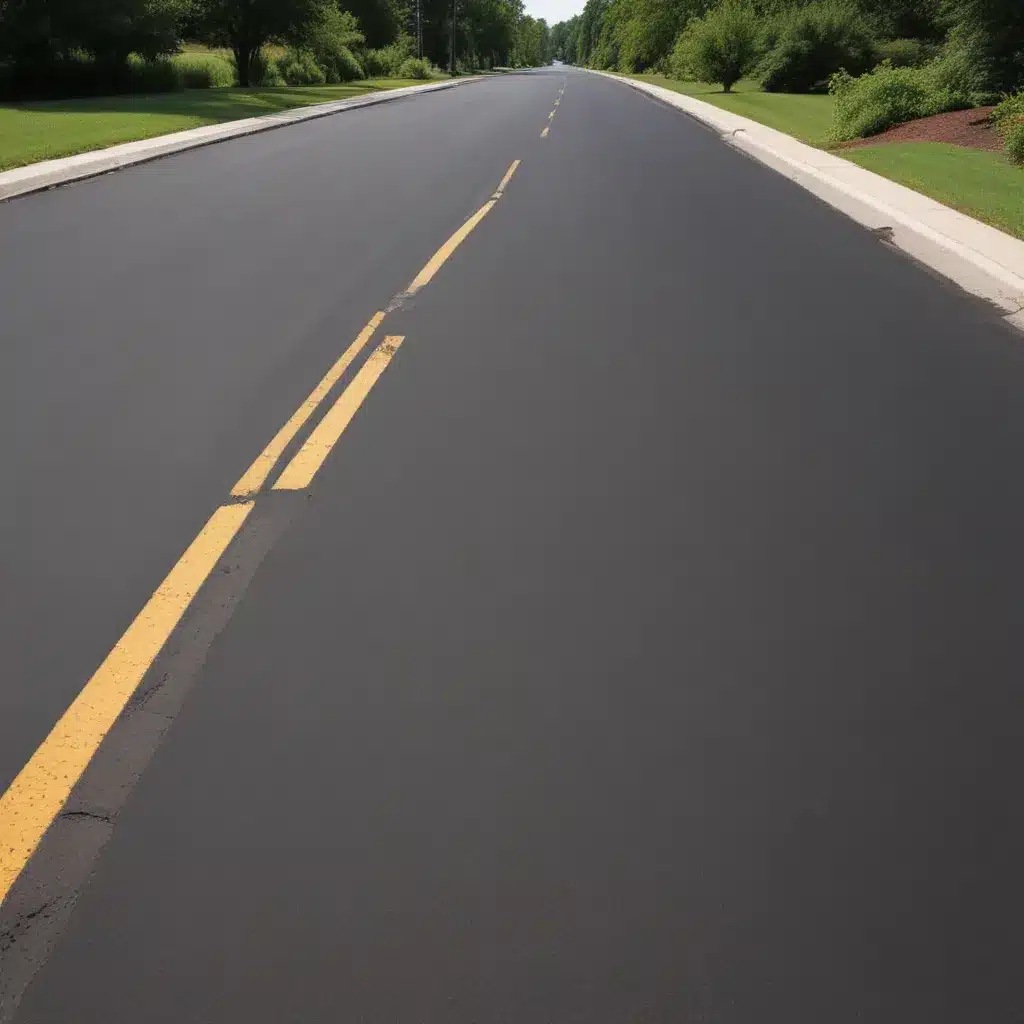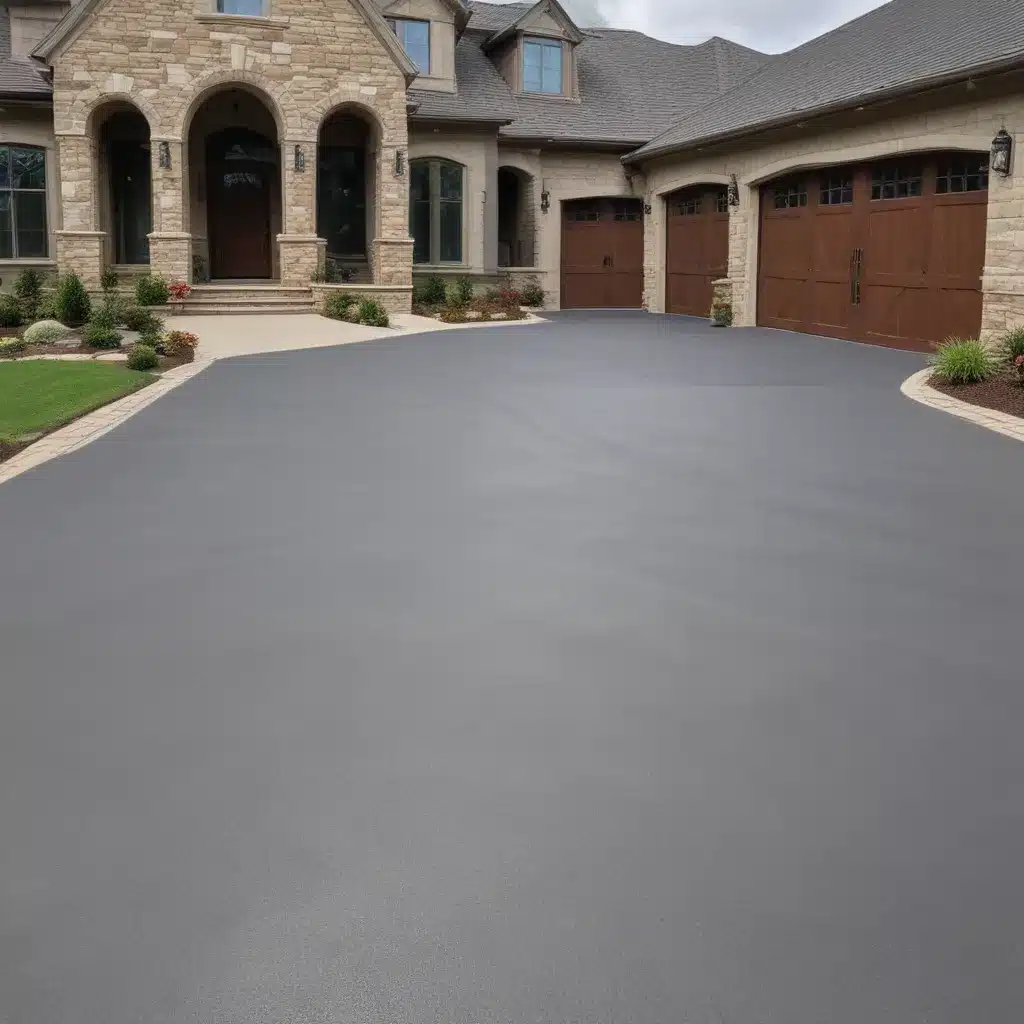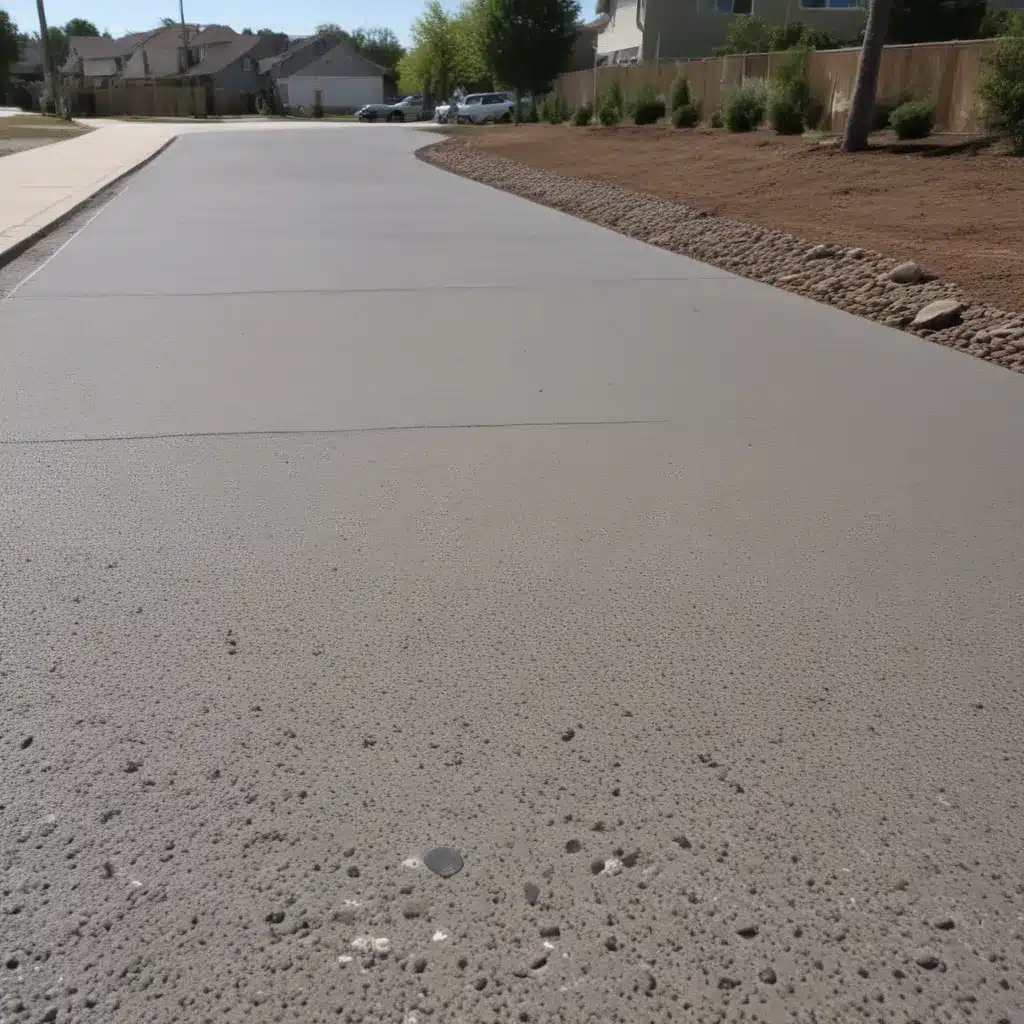The Art of the Perfect Pathway
Ah, the humble walkway – often overlooked, yet so crucial to the overall aesthetic and functionality of your home’s exterior. When was the last time you really gave your front path the attention it deserves? If you’re like most homeowners, it’s probably been a while. Well, my friend, prepare to have your eyes opened to the transformative power of a beautifully crafted walkway.
Let me paint you a picture. Imagine strolling up to your abode, your steps crunching rhythmically on a freshly laid paved path. The smooth, even surface guides you effortlessly to your front door, making every arrival feel like a grand entrance. The carefully selected materials – maybe sleek stone, rustic brick, or modern concrete – perfectly complement the architectural style of your home, tying the entire exterior together in harmonious splendor.
But a walkway is about more than just good looks. It’s a crucial element of safety and accessibility too. A well-designed pathway ensures your guests can navigate to your door without the risk of tripping over uneven ground or sinking into soft soil. And for those with mobility challenges, a properly constructed walkway can make all the difference in the world, transforming a treacherous approach into a smooth, seamless journey.
So, are you ready to pave the way to a more beautiful, functional, and welcoming home? Let’s dive in and explore the endless possibilities that await you on the road to the perfect front-door pathway.
Choosing the Right Materials
The foundation of any stunning walkway lies in the materials you select. This is where the real magic happens, folks. Do you envision a classic brick path, evoking images of quaint New England cottages? Or perhaps you’re leaning towards the clean, contemporary lines of sleek concrete? Maybe you’re feeling a bit more adventurous and want to experiment with decorative pavers or natural stone? The choices are endless, and each option has its own unique charm and practical benefits.
Brick: The Time-Honored Classic
Brick has long been a beloved choice for walkways, and it’s not hard to see why. These small, sturdy units lend an air of timeless elegance to any outdoor space, harmonizing beautifully with a wide range of architectural styles. Brick pathways are incredibly durable, able to withstand the elements and heavy foot traffic with ease. Plus, they offer a delightful textural contrast that can’t be replicated by other materials.
One of the best things about brick is its virtually limitless customization potential. You can choose from a variety of hues, ranging from rich reds and earthy tones to more contemporary grays and whites. Varying the pattern – think herringbone, running bond, or basket weave – adds an extra layer of visual interest. And for those who really want to make a statement, you can even incorporate decorative banding or medallions into the design.
The only potential downside to brick is its relatively higher cost compared to some other options. But trust me, the timeless appeal and durability of a brick walkway make it a worthwhile investment that will pay dividends for years to come.
Concrete: The Modern Marvel
If you’re seeking a sleek, contemporary look for your front path, concrete might be the way to go. This versatile material has come a long way from the plain, gray slabs of yesteryear. These days, you can find concrete in a wide array of colors, textures, and patterns to suit any aesthetic.
One of the major advantages of concrete is its affordability. It’s generally a more budget-friendly choice compared to natural stone or high-end pavers. But don’t let the lower price tag fool you – modern concrete walkways can be just as visually stunning as their more expensive counterparts.
With the right finishing touches, concrete can mimic the look of natural stone, brick, or even wood. Stamped patterns can create the illusion of intricate tile or cobblestone, while acid staining or tinting can produce rich, earthy hues. And for those who want to really make a statement, decorative inlays or aggregates can take a plain concrete slab and transform it into a true work of art.
The downside to concrete? It’s not as durable as some other materials, and it can be susceptible to cracking or discoloration over time. But with proper installation and regular maintenance, a concrete walkway can still provide years of reliable service.
Natural Stone: The Epitome of Elegance
If you really want to elevate your front-door approach, nothing quite compares to the timeless beauty of natural stone. Whether it’s sleek, polished flagstone, rugged, textured bluestone, or the warm, earthy tones of sandstone, these materials exude an undeniable air of sophistication.
One of the biggest draws of natural stone is its unparalleled durability. These materials are built to withstand the test of time, shrugging off the elements and heavy foot traffic with ease. A well-installed natural stone walkway can last for decades, making it a sound long-term investment for your home.
Of course, with that durability comes a higher price tag. Natural stone is generally the most expensive walkway option, but it’s an investment that can truly pay off in terms of curb appeal and lasting value. And let’s not forget the unique character that each piece of stone brings to the table – no two walkways will ever be exactly alike.
The only potential downside to natural stone is the level of maintenance required. These materials may need periodic sealing or cleaning to maintain their pristine appearance. But for those who are willing to put in the extra effort, the rewards of a stunning natural stone pathway are well worth it.
Designing the Ideal Walkway
Now that we’ve explored the various material options, it’s time to dive into the art of walkway design. After all, choosing the right materials is only half the battle. The way you configure those elements can make all the difference in the world.
Establishing the Right Width
One of the first things to consider when designing your walkway is the ideal width. This might seem like a straightforward decision, but trust me, it’s not as simple as you might think. The width of your path can have a significant impact on the overall flow and functionality of your front-door approach.
As a general rule of thumb, a standard walkway should be a minimum of 3 to 4 feet wide. This allows for comfortable, two-way foot traffic and provides enough space for guests to walk side-by-side. However, if you have a particularly spacious front yard or want to create a more grand, sweeping entrance, you might consider a wider walkway – perhaps 5 or 6 feet in width.
Keep in mind that the width of your path should also be proportional to the size of your home and the scale of your front yard. A narrow walkway leading up to a sprawling mansion can look out of place, just as a wide path in front of a cozy bungalow might feel overwhelming. Pay close attention to the overall dimensions and balance the walkway accordingly.
Choosing the Right Curve
Another crucial element of walkway design is the shape and curvature of the path. While a straight, linear walkway can certainly be striking, incorporating gentle curves and bends can add a touch of elegance and visual interest to your front-door approach.
Curving walkways have a way of drawing the eye forward, guiding guests on a meandering journey towards your front door. This can create a sense of anticipation and discovery, making the arrival all the more rewarding. Plus, strategically placed curves can help to navigate around existing landscape features or frame focal points in your yard.
That said, it’s important not to go overboard with the curves. An overly winding path can feel disorienting and disrupt the natural flow of foot traffic. Aim for gentle, flowing lines that complement the overall design of your home and yard. And be mindful of the radius of your curves – tight, sharp bends can be tricky to navigate, especially for those with mobility challenges.
Blending with the Landscape
One of the hallmarks of a truly successful walkway design is its seamless integration with the surrounding landscape. After all, your front-door path isn’t just a standalone feature – it’s an integral part of the overall aesthetic of your home’s exterior.
When planning your walkway, take a step back and consider how it will interact with the existing elements of your yard. Will the materials and colors complement the architectural style of your home? Do the curves and shapes echo the natural contours of the landscape? Are there opportunities to incorporate complementary plantings or hardscaping features to tie the whole look together?
The key is to create a cohesive, harmonious design that feels like a natural extension of your outdoor space. This might involve aligning the walkway with existing pathways, framing it with strategically placed trees or shrubs, or even curving it to navigate around established garden beds or water features.
By blending your walkway with the surrounding landscape, you’ll not only enhance the visual appeal of your front-door approach, but you’ll also create a more immersive, engaging experience for your guests. It’s all about striking the perfect balance between form and function.
Preparing the Foundation
Now that we’ve explored the design elements of the perfect walkway, it’s time to dive into the nitty-gritty of installation. After all, a beautifully crafted path is only as good as the foundation it’s built upon.
Proper Site Preparation
The first and most crucial step in walkway installation is proper site preparation. This involves clearing the area, grading the soil, and creating a stable, level base for your chosen materials to rest upon. Skipping or skimping on this essential step is a surefire recipe for disaster down the line.
Let’s start with the clearing. Depending on the current state of your front yard, this might involve removing overgrown vegetation, excavating existing concrete or pavement, or even leveling uneven terrain. It’s important to create a clean, blank canvas to work with, ensuring that your new walkway can sit flush with the surrounding landscape.
Next up is grading the soil. This process involves sloping the ground gently away from your home’s foundation, ensuring proper drainage and preventing water from pooling on your new walkway. Proper grading not only safeguards the structural integrity of your path, but it also helps to keep your front entryway dry and safe, even during heavy rainfalls.
Finally, it’s time to create that all-important stable base. Depending on the material you’ve chosen for your walkway, this might involve pouring a concrete or gravel foundation, tamping down crushed stone, or laying a bed of sand. The key is to establish a firm, unyielding surface that can withstand the weight of foot traffic and the elements without shifting or sinking over time.
Trust me, taking the time to properly prepare your site will pay dividends in the long run. A well-built, solid foundation is the foundation (pun intended) of a walkway that will stand the test of time.
Proper Installation Techniques
With the groundwork laid, it’s time to turn our attention to the installation process itself. And let me tell you, this is where the real magic happens. Proper installation techniques are essential for ensuring that your new walkway not only looks stunning but also functions flawlessly for years to come.
For brick or paver walkways, this might involve carefully laying each individual unit in a specific pattern, ensuring tight, uniform joints and a level surface. Natural stone pathways require meticulous cutting and shaping to achieve a seamless, polished look. And concrete walkways demand a keen eye for detail, from the proper mixing and pouring of the material to the application of decorative finishes.
Regardless of the material you choose, one thing is certain: attention to detail is key. Every step of the installation process must be executed with the utmost precision, from the proper edging and containment to the careful application of jointing compound or sealant. Skimping on any of these critical steps can lead to unsightly cracks, uneven surfaces, or premature deterioration down the line.
But fear not, my friends! With the right tools, techniques, and a little bit of elbow grease, even a DIY enthusiast can achieve professional-grade results. And if you’re not quite up to the task yourself, well, that’s where the experts come in. A reputable walkway installation contractor can ensure that your new path is built to last, with all the attention to detail that your home deserves.
Maintaining Your Walkway’s Timeless Beauty
Ah, the final piece of the puzzle – maintaining the timeless beauty and functionality of your newly installed walkway. It’s all well and good to have a stunning front-door path, but if you don’t take the necessary steps to keep it in tip-top shape, all that hard work and investment will be for naught.
Regular Cleaning and Upkeep
Let’s start with the basics: regular cleaning. Depending on the material of your walkway, this might involve sweeping away leaves and debris, power washing to remove stubborn stains, or even applying a specialized sealant or cleaner.
For brick or paver walkways, periodic joint refilling is a must to prevent weeds and maintain a polished, uniform appearance. Natural stone paths may require more intensive cleaning, such as scrubbing with a mild detergent or treating with a stone-safe cleaner.
And let’s not forget about concrete walkways – these surfaces can be particularly susceptible to staining and discoloration if not properly maintained. A regular regimen of sweeping, power washing, and applying a protective sealant can work wonders in preserving that sleek, modern look.
Addressing Cracks and Damage
No matter how well-constructed your walkway may be, the elements can take their toll over time. Cracks, chips, and uneven surfaces are all common issues that can arise, threatening the structural integrity and safety of your path.
At the first sign of any damage, it’s crucial to address the problem swiftly. Depending on the severity, this might involve patching small cracks, re-leveling uneven areas, or even completely rebuilding sections of the walkway. Ignoring these issues can lead to further deterioration and, ultimately, the need for a full replacement down the line.
When it comes to repairing your walkway, it’s always best to consult with a professional. They’ll be able to diagnose the root cause of the problem and recommend the most appropriate course of action, ensuring that your path is restored to its former glory.
Adapting to Seasonal Changes
Let’s not forget that our beloved walkways must contend with the ever-changing whims of Mother Nature. From the scorching summer sun to the frigid, icy winters, our outdoor spaces are constantly battling the elements.
As a responsible homeowner, it’s important to stay on top of seasonal maintenance to keep your walkway in tip-top shape. This might involve applying a protective sealant before the winter months, clearing away snow and ice promptly, or even adjusting your drainage system to handle heavy rainfall.
By being proactive and adapting your walkway care to the changing seasons, you can ensure that your front-door path remains safe, functional, and visually stunning year-round. After all, the last thing you want is for your carefully crafted masterpiece to succumb to the ravages of the great outdoors.
Elevating Your Curb Appeal with a Stunning Walkway
Well, there you have it, folks – the complete guide to paving the path to your front door with a new walkway. From choosing the perfect materials to mastering the art of design and installation, we’ve covered it all.
But you know, this journey isn’t just about creating a practical entryway to your home. It’s about so much more than that. It’s about elevating your curb appeal, enhancing the overall aesthetic of your outdoor space, and leaving a lasting impression on every visitor who steps foot on your property.
Think about it – your walkway is often the first thing people see when they approach your home. It’s the red carpet that leads them to your front door, setting the tone for the entire experience. And let’s be honest, a well-crafted, beautifully maintained pathway can make all the difference in the world.
Imagine the pride and satisfaction you’ll feel as you watch your guests stroll up to your home, their steps crunching rhythmically on your meticulously laid brick or stone walkway. Or the sense of accomplishment you’ll have when you pull into your driveway each day, admiring the way your new concrete path seamlessly blends with the surrounding landscape.
And let’s not forget the practical benefits too. A safe, accessible walkway can make all the difference in the world for those with mobility challenges, transforming what was once a treacherous approach into a smooth, welcoming journey. It’s about making your home more inviting, more inclusive, and more of a true reflection of your personal style.
So, what are you waiting for? It’s time to pave the way to a more beautiful, functional, and welcoming home. Whether you choose to tackle the project yourself or enlist the help of a skilled contractor, the rewards will be well worth the effort. Get out there and start designing your dream walkway – your front door is waiting!

